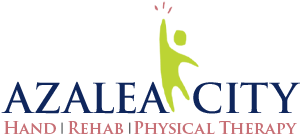Understanding Carpal Tunnel Syndrome in Mobile AL

Carpal tunnel syndrome in Mobile AL is one of those conditions that can sneak up on you. At first, it might feel like a slight tingle in your hand or wrist. But over time, that discomfort can progress into something much more disruptive-numbness, pain, and even weakness that makes everyday tasks feel impossible. The good news? Carpal tunnel syndrome doesn't have to take over your life. Azalea City Hand and Rehab and Physical Therapy's Physical Therapy/Occupational Therapy offers a non-invasive, highly effective way to relieve symptoms, improve mobility, and prevent long-term damage. In this article, we'll dive into everything you need to know about carpal tunnel syndrome and how physical therapy/occupational therapy can help you regain control.
What Is Carpal Tunnel Syndrome in Mobile AL?
Carpal tunnel syndrome (CTS) is a condition that occurs when the median nerve-one of the main nerves that runs through your arm-gets compressed as it travels through the wrist. The carpal tunnel is a narrow passageway in the wrist, formed by bones and ligaments, that allows the median nerve and tendons to pass from the forearm into the hand. When there's too much pressure on the median nerve, it can result in a range of uncomfortable symptoms in the hand and wrist.
The median nerve controls sensations in the thumb, index finger, middle finger, and half of the ring finger. It also controls some of the small muscles in the hand, so when it becomes compressed, it can interfere with your ability to grip objects and move your fingers.
Symptoms of Carpal Tunnel Syndrome
The symptoms of carpal tunnel syndrome often start gradually, but they can worsen over time if left untreated. Here are some of the most common signs of CTS:
- Numbness or Tingling in the Hand: The most noticeable symptom of carpal tunnel syndrome is a feeling of numbness or tingling in the thumb, index finger, middle finger, and half of the ring finger. This sensation may come and go at first, but it often becomes more persistent over time.
- Pain in the Wrist and Hand: Many people with carpal tunnel syndrome experience pain in the wrist that can radiate into the hand or forearm. The pain may feel like an ache or a sharp, shooting pain, especially when using the hand for repetitive tasks.
- Weakness in the Hand: As the condition progresses, you may find it difficult to grip objects or perform fine motor tasks, such as buttoning a shirt or holding a pen. Some people notice that they frequently drop objects because their hand feels weak or clumsy.
- Worsening Symptoms at Night: Symptoms of carpal tunnel syndrome often worsen at night, causing people to wake up with numbness or pain in their hands.
If you're experiencing any of these symptoms, it's important to address them early. The sooner you seek treatment, the more likely you are to avoid long-term damage to the median nerve.
What Causes Carpal Tunnel Syndrome In Mobile AL?
Carpal tunnel syndrome is caused by increased pressure on the median nerve as it passes through the carpal tunnel. There are several factors that can contribute to this compression, including:
- Repetitive Hand Movements: Repeated motions of the hand and wrist, especially those that involve bending or twisting the wrist, can lead to swelling and inflammation in the carpal tunnel. This is why CTS is common in people who perform tasks like typing, assembly line work, or using hand tools.
- Wrist Positioning: Keeping the wrist in a bent position for extended periods can put additional pressure on the median nerve. For example, sleeping with your wrist bent or typing with poor ergonomics can increase the risk of developing carpal tunnel syndrome.
- Health Conditions: Certain medical conditions, such as diabetes, rheumatoid arthritis, and hypothyroidism, can increase the likelihood of developing carpal tunnel syndrome by causing inflammation or swelling in the wrist.
- Pregnancy: Hormonal changes during pregnancy can lead to fluid retention and swelling, which can compress the median nerve and lead to temporary carpal tunnel symptoms.
- Injury: Trauma to the wrist, such as fractures or sprains, can cause swelling or changes in the structure of the carpal tunnel, increasing pressure on the median nerve.
Understanding the causes of carpal tunnel syndrome is the first step in preventing it from worsening. If you're already experiencing symptoms, a proper diagnosis is crucial for determining the best course of action.
How Is Carpal Tunnel Syndrome Diagnosed?
Diagnosing carpal tunnel syndrome involves a combination of physical examination, medical history, and diagnostic tests. Here's what you can expect if you suspect you have CTS:
- Physical Examination: Your doctor or physical therapist will start by examining your hand, wrist, and arm. They'll look for signs of muscle weakness, test your grip strength, and check for sensations of numbness or tingling in the fingers.
- Tinel's Test: One common test for CTS is Tinel's sign, in which your healthcare provider taps over the median nerve at the wrist. If tapping the nerve causes tingling or pain, it's often a sign of carpal tunnel syndrome.
- Phalen's Test: Another test used to diagnose CTS is Phalen's maneuver. In this test, you'll be asked to hold your wrists in a flexed position (bent downward) for 60 seconds. If this position causes numbness or tingling in your fingers, it may indicate carpal tunnel syndrome.
- Nerve Conduction Studies: If the diagnosis is unclear, your doctor may order a nerve conduction study to measure how well the median nerve is transmitting electrical signals. This test can confirm whether the nerve is being compressed and how severe the compression is.
Once carpal tunnel syndrome is diagnosed, the next step is creating a treatment plan that will relieve your symptoms and help you regain function.
How Physical Therapy/Occupational Therapy Helps People with Carpal Tunnel Syndrome
Physical therapy/occupational therapy is a highly effective treatment for carpal tunnel syndrome, especially in the early stages. It focuses on reducing inflammation, improving mobility, and strengthening the muscles in the hand and wrist to prevent further compression of the median nerve. Here's how physical therapy/occupational therapy can help:
1. Pain and Symptom Relief
One of the main goals of physical therapy/occupational therapy is to relieve the pain, numbness, and tingling associated with carpal tunnel syndrome. Your physical therapist will use a variety of techniques to reduce inflammation and improve circulation in the affected area.
- Manual Therapy: Hands-on techniques, such as soft tissue mobilization and gentle stretching, can help reduce tension in the muscles and tendons around the wrist, relieving pressure on the median nerve.
- Ice and Heat Therapy: Applying ice to the wrist can help reduce swelling and numb pain, while heat can relax tight muscles and promote healing.
- Splinting: Wearing a wrist splint, especially at night, can help keep the wrist in a neutral position and reduce pressure on the median nerve.
2. Strengthening and Stretching Exercises
Physical therapy/occupational therapy focuses on improving the strength and flexibility of the muscles in the hand, wrist, and forearm. These exercises not only relieve current symptoms but also help prevent the condition from worsening.
- Strengthening Exercises: Strengthening the muscles that support the wrist can reduce the strain on the median nerve and improve hand function. Your therapist will guide you through exercises that target the forearm muscles, improving overall stability.
- Stretching Techniques: Stretching the muscles and tendons in the hand and wrist can relieve tension and improve flexibility, making it easier to perform everyday tasks without discomfort.
3. Ergonomic Training
One of the leading causes of carpal tunnel syndrome is poor wrist positioning during work or daily activities. Physical therapy/occupational therapy includes ergonomic training to help you adjust your workspace and improve posture, reducing the strain on your wrists.
- Posture Education: Your therapist will teach you how to maintain proper wrist alignment when typing, using a mouse, or performing other repetitive tasks. They'll also recommend changes to your workstation, such as adjusting the height of your chair or keyboard.
- Activity Modification: If certain activities trigger your symptoms, your therapist will suggest modifications that reduce pressure on the median nerve while allowing you to continue with your daily routine.
4. Preventing Future Flare-Ups
Physical therapy/occupational therapy not only helps relieve current symptoms but also prevents future flare-ups by strengthening the muscles and improving wrist mechanics. Your therapist will provide you with exercises to continue at home, ensuring long-term relief and prevention.
What Should You Do If You Think You Have Carpal Tunnel Syndrome?
If you're experiencing symptoms of carpal tunnel syndrome, it's important to seek treatment as early as possible. Here's what you should do:
- Consult a Healthcare Professional: Schedule an appointment with your doctor or physical therapist for an evaluation. Early diagnosis and treatment can prevent the condition from worsening.
- Rest Your Hands and Wrists: Give your hands a break from repetitive tasks, especially if they're causing pain or numbness. Avoid activities that involve prolonged wrist flexion or heavy gripping.
- Apply Ice: To reduce inflammation, apply an ice pack to the affected wrist for 15-20 minutes at a time, several times a day.
- Consider Splinting: Wearing a wrist splint, particularly at night, can help keep your wrist in a neutral position and reduce symptoms.
Reclaim Your Hand Function with Physical Therapy/Occupational Therapy
Carpal tunnel syndrome can make even the simplest tasks feel frustrating and painful, but it doesn't have to be a permanent problem. With the right treatment, including physical therapy/occupational therapy at Azalea City Hand and Rehab and Physical Therapy, you can alleviate your symptoms, improve wrist function, and prevent future flare-ups. Don't let carpal tunnel syndrome hold you back-schedule a consultation with a physical therapist today and take the first step toward lasting relief and better mobility.
OFFICE HOURS
Monday
8:00am - 5:00pm
Tuesday
8:00am - 5:00pm
Wednesday
8:00am - 5:00pm
Thursday
8:00am - 5:00pm
Friday
8:00am - 12:00pm
Saturday & Sunday
Closed
Azalea City Hand and Rehab and Physical Therapy
316 S Sage Ave Ste C
Mobile, AL 36606


